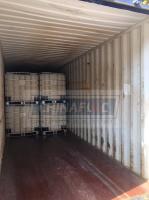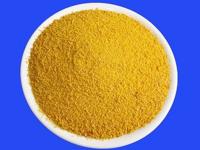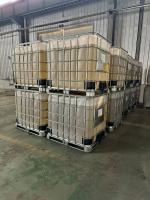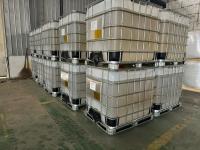Our Products
Product Center / largest and leading manufacturer of polydadmac in China from Chinafloc

PolyDADMAC, or polydiallyldimethylammonium chloride, is a cationic organic polymer extensively used as a coagulant, charge neutralizer, and flocculation aid in various water treatment, industrial, and mineral processing applications. It is one of the most effective cationic polymers due to its strong positive charge, excellent solubility, and compatibility with a wide range of anionic and nonionic substances. The main application of PolyDADMAC revolves around its ability to destabilize negatively charged particles and colloids in aqueous systems, promoting aggregation, clarification, and separation.
In water and wastewater treatment, PolyDADMAC serves as a primary coagulant and coagulant aid in both municipal and industrial sectors. Raw water often contains suspended solids, colloidal particles, natural organic matter, and microorganisms that carry a negative surface charge. These negatively charged materials repel one another and remain dispersed, making sedimentation or filtration inefficient. PolyDADMAC, being strongly cationic, neutralizes these surface charges and bridges particles together to form larger flocs that settle more readily. This mechanism is known as charge neutralization and polymer bridging. As a result, PolyDADMAC significantly improves the efficiency of clarification, reduces turbidity, and enhances the performance of downstream filtration processes.
For municipal drinking water treatment, PolyDADMAC is commonly used either as a standalone coagulant or as a coagulant aid alongside traditional inorganic coagulants such as aluminum sulfate (alum) or ferric chloride. Its use helps reduce the dosage of metal salts, lowers sludge generation, and avoids the introduction of additional ions such as sulfates or chlorides into the treated water. Moreover, PolyDADMAC works effectively over a broad pH range (typically pH 4–10), and its flocculation performance is less affected by changes in temperature or alkalinity. These characteristics make it a preferred choice in potable water production systems, especially for surface water sources with variable quality.
In industrial wastewater treatment, PolyDADMAC is widely used to remove suspended solids, colloids, oils, and dyes from effluents produced by textile dyeing, petrochemical processing, pulp and paper production, mining, and food manufacturing. Many industrial wastewaters are highly colored due to the presence of anionic dyes or organic molecules that are difficult to remove by conventional coagulants. PolyDADMAC’s high cationic charge density allows it to effectively adsorb and neutralize these negatively charged molecules, breaking color bonds and producing clear effluent. For instance, in textile dyeing wastewater, PolyDADMAC interacts with sulfonate or carboxylate groups in dye molecules, forming insoluble complexes that settle rapidly.
In pulp and paper manufacturing, PolyDADMAC is used as a retention and drainage aid, pitch control agent, and charge neutralizer. It enhances the retention of fine fibers, fillers, and pigments during papermaking, improving product quality and reducing raw material loss. As a charge neutralizer, it stabilizes the wet-end chemistry of paper machines by balancing the anionic charge from fibers and additives. PolyDADMAC also prevents pitch and resin deposition by neutralizing sticky anionic materials, keeping paper machine components cleaner and operating more efficiently. When used in combination with colloidal silica or bentonite microparticles, PolyDADMAC promotes rapid drainage and enhances paper formation quality.
In sludge dewatering and thickening, PolyDADMAC acts as a preconditioner or charge neutralizer before the addition of high-molecular-weight flocculants like cationic polyacrylamide (CPAM). Wastewater treatment plants generate large volumes of biological and chemical sludge that contain a high proportion of water and fine solids. When PolyDADMAC is added, it destabilizes the suspended solids and promotes the formation of denser, more compact flocs. This results in improved dewatering efficiency, lower moisture content in the sludge cake, and reduced disposal costs. The polymer also enhances filtration rates in belt filter presses, centrifuges, and vacuum filters.
In oilfield and petrochemical operations, PolyDADMAC is utilized for oil–water separation, emulsion breaking, and produced water clarification. In crude oil extraction and refining processes, oil–water emulsions are stabilized by naturally occurring surfactants that prevent phase separation. PolyDADMAC’s strong positive charge interacts with the negatively charged oil droplets, neutralizing their surface potential and allowing coalescence. This process facilitates faster separation of oil and water, improving the efficiency of water treatment units in oilfields and refineries. It is also used in desalting units to enhance the removal of salts and reduce corrosion risk.
Another key application of PolyDADMAC is in mineral processing and mining. Many mineral slurries and tailings contain fine negatively charged particles that remain suspended for long periods. PolyDADMAC, due to its cationic nature, effectively neutralizes these particles, promoting sedimentation and improving the clarity of recovered process water. It is particularly effective in clarifying tailings ponds in coal washing, bauxite refining, phosphate beneficiation, and precious metal extraction. Its use not only improves solid–liquid separation but also enables recycling of clarified water, contributing to more sustainable mining practices.
In desalination pretreatment and membrane filtration systems, PolyDADMAC is applied to remove colloidal particles, organics, and turbidity before the water enters reverse osmosis (RO) membranes. The polymer coagulates fine suspended solids, reducing membrane fouling and prolonging operational life. Because PolyDADMAC does not introduce metallic ions, it minimizes the risk of scaling or chemical deposition on membrane surfaces, which is a common issue with aluminum- or iron-based coagulants.
PolyDADMAC is also used in swimming pool and recreational water systems as a clarifier. It helps maintain crystal-clear water by removing fine particles, organic matter, and algae debris that conventional filtration cannot capture. Since it does not alter pH significantly or introduce metals, it is safer and easier to manage compared with traditional alum-based clarifiers.
In sugar, beverage, and food industries, PolyDADMAC helps in juice clarification, sugar syrup refining, and wastewater treatment. It efficiently removes color and suspended impurities from sugar solutions and improves the transparency of final products. In breweries and beverage plants, it aids in wastewater color removal and solids separation.
Operationally, PolyDADMAC offers multiple advantages over inorganic coagulants. It generates less sludge, dissolves quickly, and functions effectively in both cold and warm water. Its strong cationic charge allows it to perform at lower doses, leading to cost savings and less chemical handling. PolyDADMAC solutions typically contain 20–50 % active solids, and they can be used alone or in combination with flocculants such as anionic or nonionic polyacrylamides to achieve synergistic effects.
From an environmental standpoint, PolyDADMAC is considered low in toxicity and biodegradable under appropriate conditions. It does not contribute to residual aluminum or iron in treated water, which is important for potable water applications.
In summary, the main application of PolyDADMAC lies in its role as a highly efficient cationic coagulant and charge neutralizer for water and wastewater treatment, sludge dewatering, paper production, mining, oilfield operations, and industrial clarification processes. Its ability to neutralize negative charges, remove color, and promote solid–liquid separation makes it indispensable in modern treatment technologies. PolyDADMAC’s versatility, high performance, and environmental compatibility ensure that it remains one of the most widely used polymers in global water treatment and process industries.





